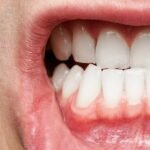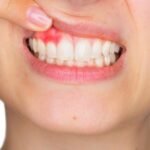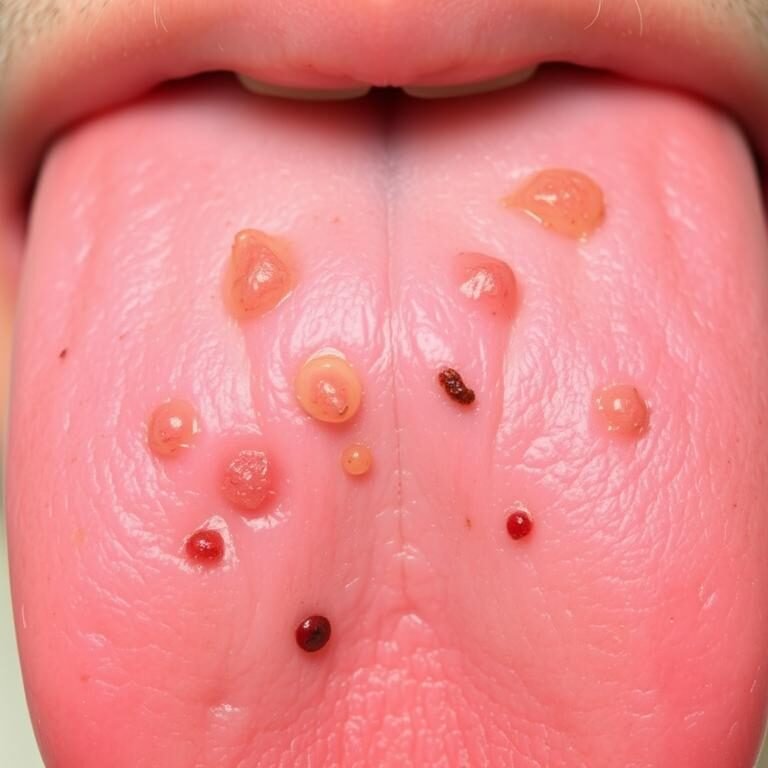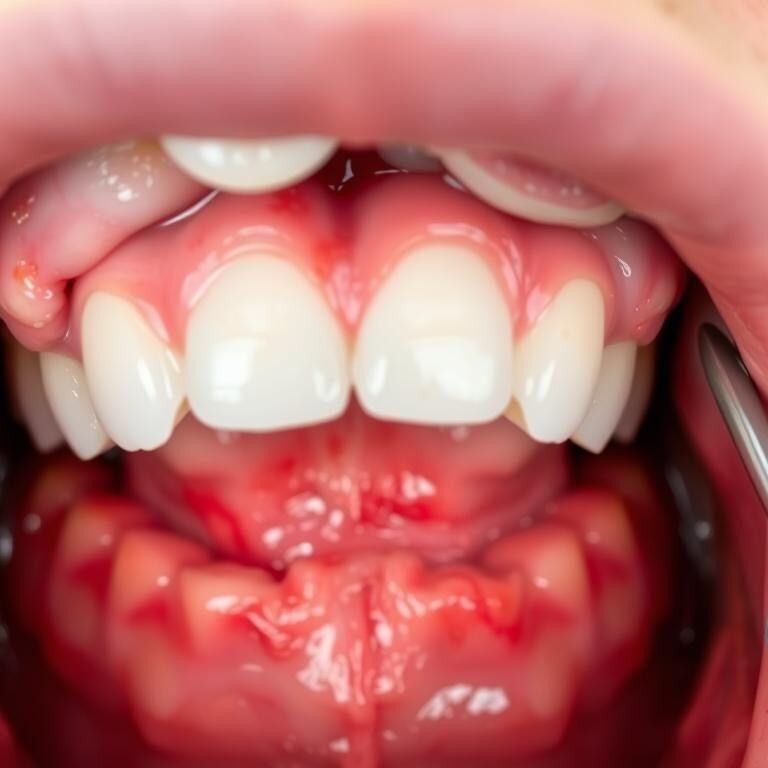Table of Contents
Potential Negative Effects of Chewing Gum on Dental Health
Chewing gum has become a common habit for many individuals as a way to freshen breath or curb cravings throughout the day. However, it is important to be aware of the potential negative effects it can have on dental health. One of the primary concerns is the impact of sugar in chewing gum on tooth decay. Sugary gums can contribute to the growth of harmful bacteria in the mouth, leading to cavities and other dental issues if proper oral hygiene is not maintained diligently.
| Negative Effects of Chewing Gum on Dental Health | Description |
|---|---|
| Increased Risk of Tooth Decay | Chewing gum often contains sugar, which can feed bacteria in the mouth, leading to the production of acids that can erode tooth enamel and cause cavities. |
| Jaw Muscle Fatigue | Prolonged chewing of gum can lead to fatigue and overuse of the muscles in the jaw, potentially resulting in discomfort or pain, particularly in the temporomandibular joint (TMJ). |
| TMJ Disorders | Excessive chewing gum can contribute to the development of temporomandibular joint disorders, leading to pain, clicking, or popping sensations in the jaw joint. |
| Dental Erosion | Chewing gum containing acidic ingredients may contribute to dental erosion, gradually wearing away the protective enamel layer of teeth and increasing susceptibility to decay. |
| Increased Risk of Gum Recession | Intense chewing of gum can exert pressure on the gum tissues, potentially causing them to recede over time, leading to sensitivity, discomfort, and an increased risk of gum disease. |
Furthermore, the act of chewing gum itself can potentially cause damage to tooth enamel over time. The repetitive motion of chewing can put stress on the teeth, especially if the gum is chewed vigorously or for prolonged periods. This can weaken the enamel and make the teeth more susceptible to erosion and sensitivity. It is essential for individuals to be mindful of the potential consequences of chewing gum regularly and to consider sugar-free alternatives or limit their gum consumption to protect their dental health.
Impact of Sugar in Chewing Gum on Tooth Decay

Chewing gum containing sugar poses a significant risk to dental health, particularly in terms of promoting tooth decay. The presence of sugar in gum provides a food source for bacteria in the mouth, leading to the production of acids that can erode tooth enamel over time. This erosion weakens the protective layer of the teeth, making them more susceptible to decay and cavities. Regular consumption of sugar-laden gum can therefore contribute to the deterioration of oral health, emphasizing the importance of choosing sugar-free alternatives to mitigate these negative effects.
In addition to the direct impact on tooth decay, the presence of sugar in chewing gum also contributes to the overall acidogenic environment in the mouth. This acidic environment not only promotes the development of cavities but can also lead to general oral health issues such as gum disease and enamel erosion. By understanding the relationship between sugar in chewing gum and its effects on tooth decay, individuals can make informed choices to prioritize their dental health and reduce the risk of oral health complications associated with excessive sugar consumption.
Potential Damage to Tooth Enamel from Chewing Gum
Chewing gum is a common habit for many individuals, but it’s important to be aware of the potential damage it can cause to tooth enamel. The repetitive chewing action involved in gum chewing can lead to increased wear and tear on the enamel, the protective outer layer of teeth. Enamel plays a critical role in shielding teeth from decay and sensitivity, so any erosion of this layer can compromise dental health.
Furthermore, some chewing gum products may contain acidic ingredients that can further weaken enamel over time. Acids, whether from natural or artificial sources, can break down the minerals in enamel, making teeth more susceptible to damage and decay. It’s crucial to choose gum options that are sugar-free and non-acidic to help minimize the risk of enamel erosion and maintain optimal oral health.
Effect of Chewing Gum on Jaw Muscles and TMJ Disorder
Chewing gum is often enjoyed for its minty freshness and potential benefits for oral hygiene, but its impact on jaw muscles and temporomandibular joint (TMJ) disorder is a pertinent consideration. The act of repetitively chewing gum can lead to overuse of the jaw muscles, particularly the temporomandibular joint, which connects the jawbone to the skull. This excessive strain on the TMJ can contribute to discomfort, pain, and even potential dysfunction of the joint over time. Individuals who already experience symptoms of TMJ disorder may exacerbate their condition by partaking in frequent gum chewing.
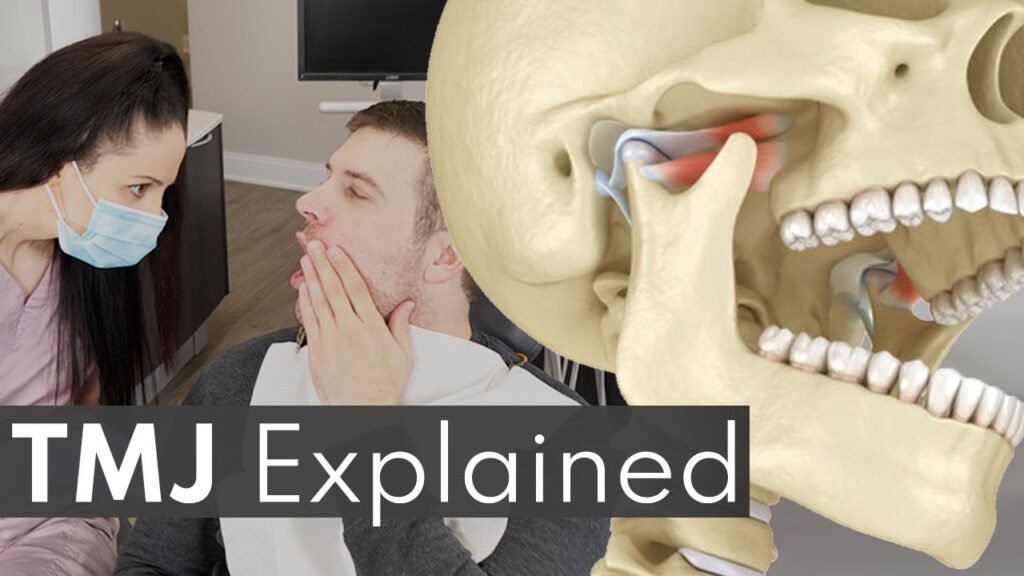
Furthermore, the constant motion of chewing gum can also lead to muscle fatigue in the jaw, contributing to tension and soreness in the surrounding structures. Regularly engaging in vigorous chewing motions without adequate rest periods can strain the muscles involved in the chewing process, potentially leading to muscular imbalances and discomfort. For individuals predisposed to TMJ disorders or those already experiencing symptoms, moderation in gum chewing habits is advisable to minimize the risk of exacerbating jaw muscle strain and TMJ-related issues.
Potential Risk of Choking on Chewing Gum
Chewing gum is a popular habit enjoyed by many, but it’s essential to be aware of the potential risks associated with it. One such risk is the possibility of choking on gum, especially in young children. Due to its sticky nature, gum can easily become lodged in the throat, leading to breathing difficulties or even blockages if not addressed promptly. It is crucial for parents to monitor their children when they chew gum to prevent any choking incidents.
In addition to children, adults should also exercise caution when chewing gum, as accidentally inhaling or swallowing gum can pose a choking hazard. While cases of choking on gum are relatively rare, it is important to chew gum responsibly and avoid distractions that may increase the risk of choking. Being mindful of how much gum is being chewed at once and disposing of gum properly once its flavor has faded can help reduce the likelihood of choking incidents.
Impact of Artificial Sweeteners in Chewing Gum on Oral Health
Artificial sweeteners are commonly used in chewing gum as a sugar substitute to provide the sweet taste without the risk of tooth decay. However, some artificial sweeteners, such as aspartame and saccharin, have been associated with potential negative impacts on oral health. Studies suggest that artificial sweeteners can alter the oral microbiome, affecting the balance of good and bad bacteria in the mouth. This imbalance can contribute to oral health issues such as cavities and gum disease.

Furthermore, artificial sweeteners in chewing gum can also stimulate sugar cravings and increase the overall sugar intake in individuals, which can indirectly affect oral health. Excessive sugar consumption is a known risk factor for dental caries and other oral health problems. Therefore, while artificial sweeteners may be a better alternative to sugar in terms of reducing the risk of tooth decay, it is essential to consume them in moderation and maintain good oral hygiene practices to prevent any adverse effects on oral health.
Potential Link Between Chewing Gum and Dental Erosion
Chewing gum has been a popular pastime for many individuals, offering a range of flavors and textures for enjoyment. However, there is a potential link between chewing gum and dental erosion that warrants consideration. The act of chewing gum, especially for extended periods, can lead to an increase in saliva production. While saliva is beneficial for oral health as it helps wash away food particles and neutralizes acids, excessive chewing of gum with added sugars or acidic ingredients may contribute to the erosion of tooth enamel over time.
Dental erosion occurs when the enamel, the protective outer layer of the teeth, is gradually worn down by acids. Sugars and acids present in certain types of chewing gum can weaken the enamel, making it more susceptible to erosion. This erosion can result in tooth sensitivity, discoloration, and even structural damage to the teeth if left unchecked. It is important for individuals to be mindful of the ingredients in the chewing gum they consume and limit their intake to reduce the risk of dental erosion and maintain optimal oral health.
Effect of Chewing Gum on Saliva Production and Oral Health
Chewing gum can have a notable impact on saliva production and overall oral health. Saliva plays a crucial role in maintaining oral health by protecting the teeth against acids and bacteria. When chewing gum, the act of chewing stimulates saliva production, which helps neutralize acids in the mouth and wash away food particles, reducing the risk of cavities and gum disease. Additionally, saliva contains essential minerals that aid in the remineralization of tooth enamel, contributing to the preservation of dental health. Therefore, incorporating sugar-free gum into your oral hygiene routine can promote saliva production and support a healthy oral environment.
On the contrary, it is important to note that excessive chewing of gum, especially those with sugar content, can lead to adverse effects on saliva production and oral health. Sugar-containing gum can provide a fuel source for bacteria in the mouth, leading to an increase in acid production and a higher risk of tooth decay.
Moreover, frequent chewing of gum with sugar can overwork the salivary glands, potentially reducing saliva production over time. It is essential to choose sugar-free gum options to enjoy the benefits of increased saliva flow without compromising oral health. By being mindful of the type and frequency of gum chewing, individuals can harness the positive effects of saliva production on oral health while avoiding potential detrimental consequences.
Potential Association Between Chewing Gum and Cavities
Chewing gum is a popular habit among many individuals, but its potential association with cavities is a concern within the dental community. The act of chewing gum can lead to increased saliva production, which is beneficial for oral health as saliva helps to neutralize acids and wash away food particles. However, certain types of chewing gum containing sugars or artificial sweeteners can have adverse effects on teeth if not used in moderation. Sugars in gum can fuel the bacteria in the mouth, leading to the production of acids that can attack tooth enamel and contribute to cavity formation. Similarly, some artificial sweeteners may also have the potential to harm teeth if consumed excessively.
It is essential for individuals to be mindful of the ingredients in the chewing gum they choose and to be aware of their overall oral hygiene practices. Opting for sugar-free gum can be a better choice to reduce the risk of cavities, as these products do not provide fuel for bacteria to produce harmful acids. Additionally, maintaining a consistent oral care routine, including brushing twice a day, flossing, and regular dental check-ups, can help mitigate the potential negative effects of chewing gum on dental health. By being proactive in their oral care habits and making informed choices about the products they use, individuals can enjoy the benefits of chewing gum while minimizing the risk of cavities.
Impact of Chewing Gum with Citric Acid on Tooth Sensitivity
Chewing gum containing citric acid may contribute to increased tooth sensitivity in some individuals. Citric acid is commonly added to chewing gum for its sour flavor and preservative properties, but it can also have a corrosive effect on tooth enamel over time. The erosion of enamel can expose the sensitive dentin layer underneath, leading to heightened sensitivity to hot, cold, sweet, or acidic foods and drinks.
| Factor | Impact on Tooth Sensitivity |
|---|---|
| Chewing Gum with Citric Acid | May increase tooth sensitivity due to acidic content |
| Frequency of chewing | Increased frequency may exacerbate sensitivity |
| Duration of chewing | Prolonged chewing may intensify sensitivity |
| Oral hygiene practices | Regular brushing and flossing can mitigate sensitivity |
| Individual susceptibility | Some individuals may be more prone to sensitivity |
| Overall dental health | Poor dental health may amplify sensitivity |
| Use of sensitivity toothpaste | May help alleviate sensitivity symptoms |
| Professional dental care | Dental treatments can address underlying issues |
Individuals with a history of tooth sensitivity or enamel erosion should exercise caution when consuming chewing gum with citric acid. It is recommended to limit the frequency and duration of chewing gum consumption to minimize the potential impact on tooth sensitivity. Maintaining good oral hygiene practices, such as regular brushing with fluoride toothpaste and using a soft-bristled toothbrush, can help protect against the effects of citric acid on tooth enamel. If tooth sensitivity persists or worsens, it is advisable to consult a dentist for further evaluation and personalized recommendations.
Effect of Chewing Gum on Braces or Dental Appliances
Chewing gum can present challenges for individuals with braces or dental appliances. The sticky nature of gum can adhere to the brackets and wires of braces, making it difficult to clean properly. Residual gum stuck in the braces not only hinders effective oral hygiene practices but also increases the risk of plaque buildup, which can lead to tooth decay and gum disease over time. Additionally, chewing gum excessively with braces or dental appliances may exert unwanted pressure on the hardware, potentially causing damage or misalignment.
It is crucial for individuals with braces or dental appliances to exercise caution when consuming gum to protect their oral health and the integrity of their orthodontic treatment. Dentists typically advise patients to avoid chewing gum altogether or to opt for sugar-free alternatives that are less likely to stick to the braces. As with any dietary choice, consulting with your orthodontist or dentist about the impact of chewing gum on your specific dental situation is advisable to prevent potential complications and ensure optimal oral health during orthodontic treatment.
Potential Risk of Temporomandibular Joint Disorder from Chewing Gum
Chewing gum is a popular habit for many individuals, offering a convenient way to freshen breath or satisfy a craving for something sweet. However, this seemingly harmless activity may pose a potential risk when it comes to the temporomandibular joint (TMJ). The repetitive motion of chewing gum can put strain on the muscles and joints of the jaw, leading to discomfort and potential issues with the TMJ over time.
Individuals who already have underlying jaw issues or conditions such as temporomandibular joint disorder (TMD) may be particularly susceptible to exacerbating their symptoms through excessive gum chewing. The continuous movement involved in chewing gum can put additional stress on the already sensitive joint, potentially worsening pain, stiffness, or clicking sensations associated with TMD. It is essential for those experiencing jaw discomfort or diagnosed with TMD to be cautious with their gum chewing habits to prevent further strain on the TMJ.
Impact of Chewing Gum on Dental Fillings or Crowns
Chewing gum, if excessively used, can potentially have negative consequences on dental fillings or crowns. The repetitive chewing motion can exert pressure on existing dental fillings or crowns, leading to wear and tear over time. Especially in cases where the dental work is not securely in place or if it is already showing signs of wear, the act of chewing gum can further compromise the structural integrity of the fillings or crowns. This can result in the need for premature replacement or repair, adding to the overall maintenance costs of dental care.
Furthermore, the ingredients in some chewing gums, such as sugar or acidic additives, can also contribute to deterioration of dental fillings or crowns. Sugar can promote bacterial growth in the oral cavity, leading to the formation of plaque and eventual decay around the dental work. Similarly, acidic substances can erode the surface of fillings or crowns, weakening the bond between the restoration and the tooth structure. It is important for individuals with dental work to be mindful of the types of chewing gum they consume and to practice moderation in order to preserve the longevity and function of their fillings or crowns.
Potential Association Between Chewing Gum and Gingivitis
Chewing gum is a popular habit for many, but its potential association with gingivitis is a concerning issue in the realm of oral health. Gingivitis is characterized by inflammation and tenderness of the gums, often caused by plaque buildup and bacteria. Studies have suggested that the act of chewing gum may lead to increased plaque accumulation along the gumline, which can contribute to the development of gingivitis over time. The continuous stimulation of the gums from chewing gum may also irritate the soft tissues, making them more susceptible to inflammation and infection.
Furthermore, certain ingredients in chewing gum, such as sugar and artificial sweeteners, may fuel the growth of harmful bacteria in the oral cavity, exacerbating the risk of gingivitis. Sugar provides a food source for bacteria to thrive and produce acid that can erode tooth enamel and inflame gum tissues. On the other hand, artificial sweeteners, though low in calories, can still disrupt the delicate balance of oral microbiota and contribute to gum disease. As such, individuals who are prone to gingivitis or already exhibit signs of gum inflammation should be mindful of their chewing gum habits and opt for sugar-free varieties to mitigate potential risks to their oral health.
Effect of Chewing Gum on Overall Oral Hygiene Practices.
Chewing gum can play a role in enhancing overall oral hygiene practices when integrated into a comprehensive oral care routine. The act of chewing sugar-free gum, particularly after meals, can help stimulate saliva production, which is essential for maintaining a healthy mouth. Saliva aids in washing away food particles, neutralizing acids, and remineralizing enamel, which can contribute to a lower risk of cavities and tooth decay. Additionally, the act of chewing gum may help dislodge food debris from hard-to-reach areas and promote a fresh feeling in the mouth between brushing sessions.
Moreover, choosing gum with added ingredients like xylitol can offer additional benefits to oral health. Xylitol has been shown to inhibit the growth of cavity-causing bacteria in the mouth, potentially reducing the risk of dental caries. By incorporating xylitol-containing gum into a daily oral hygiene regimen, individuals may experience improved dental health outcomes. However, it is vital to note that chewing gum should not replace traditional oral care practices such as brushing twice daily, flossing, and regular dental check-ups, but can serve as a complement to these essential habits.
Can chewing gum with artificial sweeteners actually benefit my oral health?
Chewing gum with artificial sweeteners can be beneficial for oral health as they do not contribute to tooth decay like sugar does. However, it is still important to maintain good oral hygiene practices.
Is there a recommended amount of time to chew gum for optimal oral health benefits?
It is generally recommended to chew sugar-free gum for about 20 minutes after meals to stimulate saliva production and help wash away food particles.
Can chewing gum help with bad breath?
Chewing sugar-free gum can help freshen breath by increasing saliva flow, which can help wash away bacteria and food particles that cause bad breath.
Are there specific types of gum that are better for oral hygiene than others?
Sugar-free gum is generally considered better for oral hygiene as it does not contribute to tooth decay. Look for gum that is sweetened with xylitol, as it has been shown to have benefits for teeth.
Can chewing gum replace regular oral hygiene practices like brushing and flossing?
Chewing gum should not replace regular oral hygiene practices like brushing and flossing. It can be a helpful addition to your routine, but it is not a substitute for thorough cleaning of your teeth.




